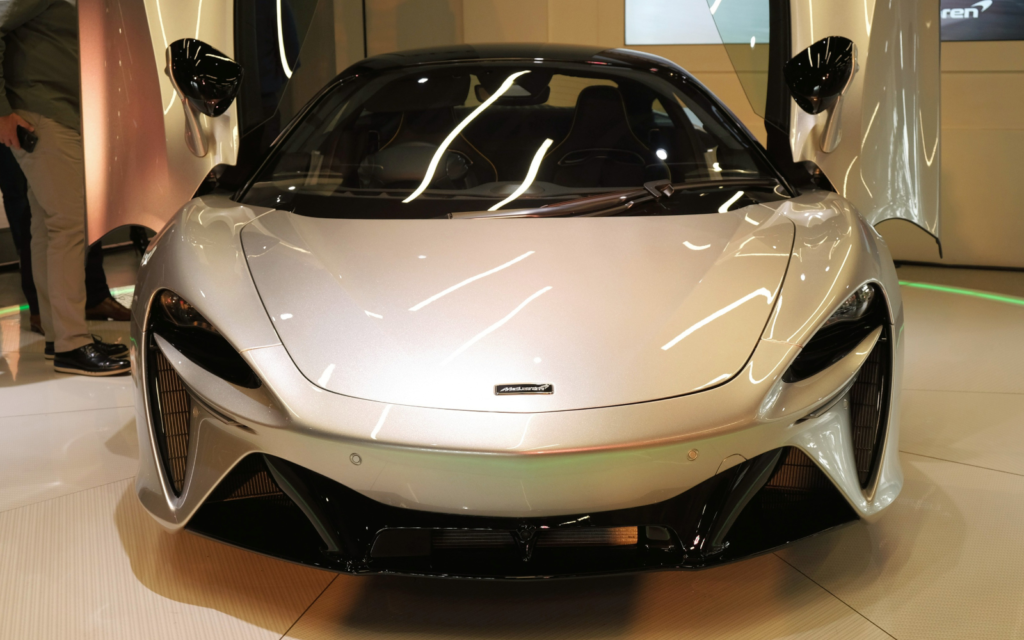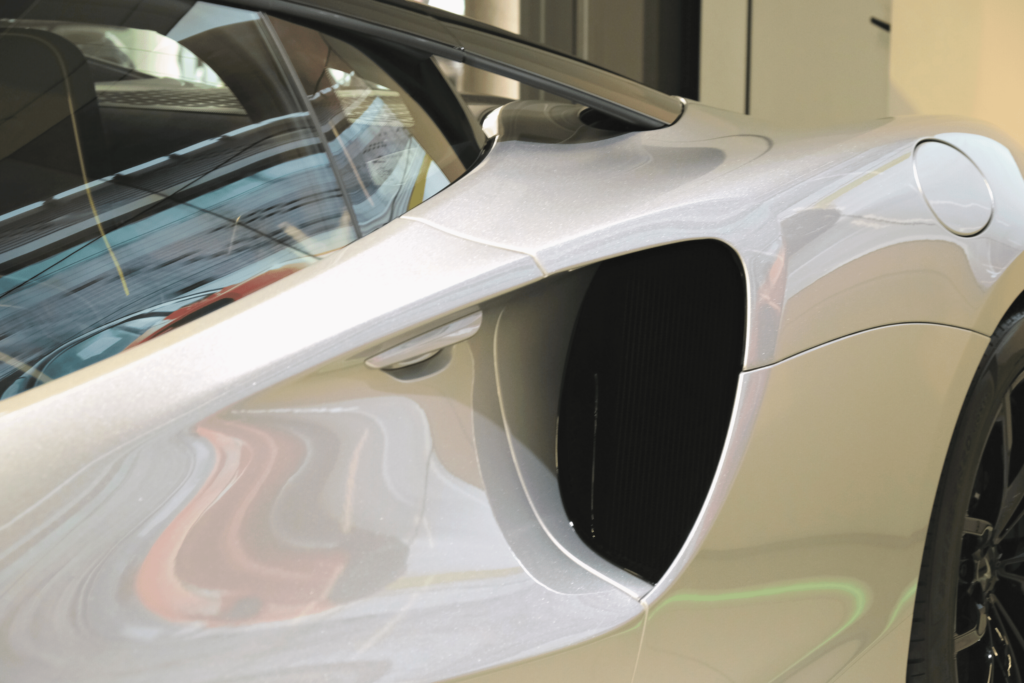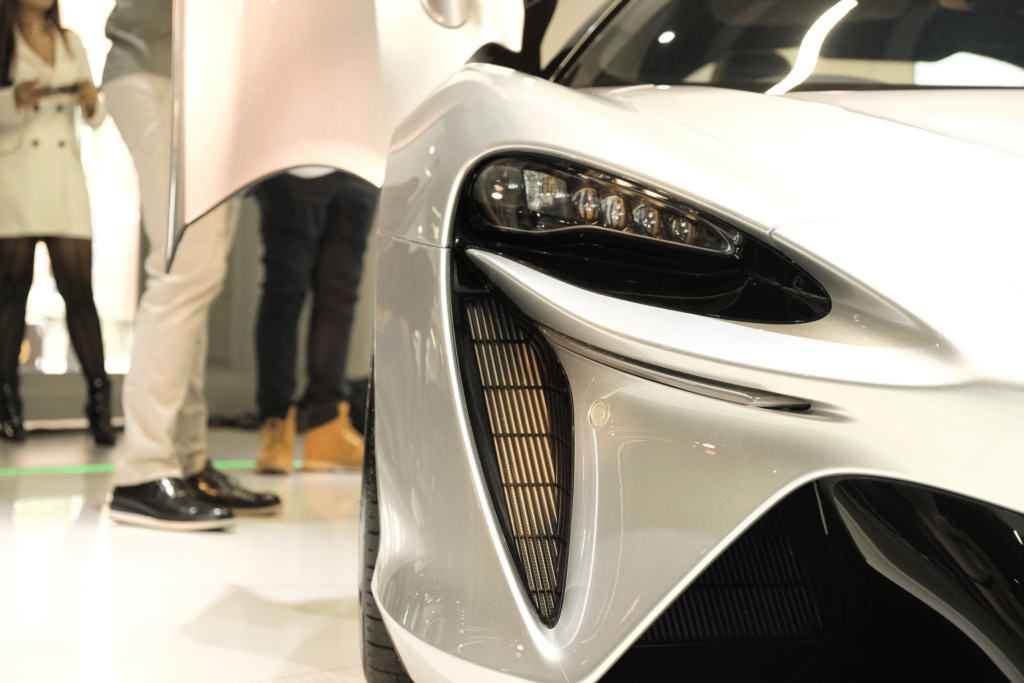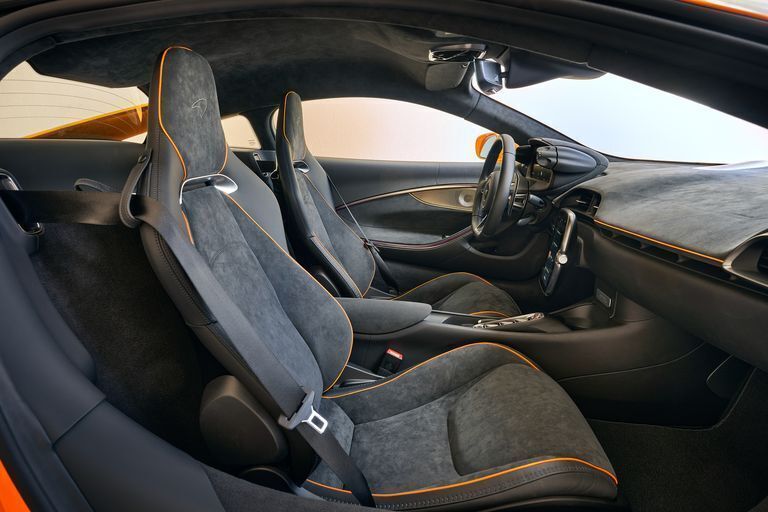McLaren South Africa unveiled its first series-production plug-in hybrid supercar, the McLaren Artura, on Saturday, 12 November, at an intimate launch event in the Daytona showroom at Melrose Arch.
This isn’t the first hybrid from the British car maker. The P1 and Speedtail preceded it. But those were specialist vehicles with a limited production run. The Artura marks McLaren’s first proper step towards the brand’s electrified future.
The start of a new beginning
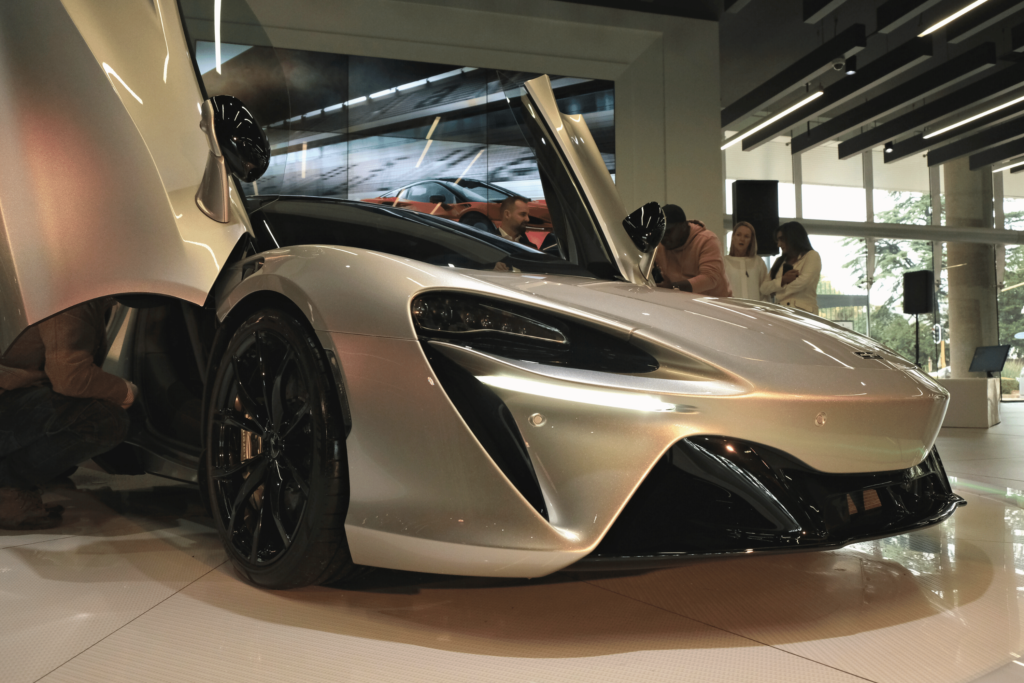 This first step starts with a completely new platform, dubbed McLaren Carbon Lightweight Architecture (MCLA). The twin-turbo V8 engine of old is replaced by a smaller 3.0-litre twin-turbo V6. It is positioned in the centre of the car and drives the rear wheels via a new eight-speed twin-clutch automatic transmission. That’s a whole extra gear more than the previous seven-speed ‘box. McLaren yanked out the reverse gear to make room.
This first step starts with a completely new platform, dubbed McLaren Carbon Lightweight Architecture (MCLA). The twin-turbo V8 engine of old is replaced by a smaller 3.0-litre twin-turbo V6. It is positioned in the centre of the car and drives the rear wheels via a new eight-speed twin-clutch automatic transmission. That’s a whole extra gear more than the previous seven-speed ‘box. McLaren yanked out the reverse gear to make room.
If you want to reverse, you are solely reliant on the new electric motor and its 7.4kWh battery pack. The e-motor and the twin-turbo V6 offer a combined output of 671bhp (500kW) and 720Nm of torque. McLaren says the Artura will take you from 0-100km/h in three seconds and can manage a top speed of 330km/h.
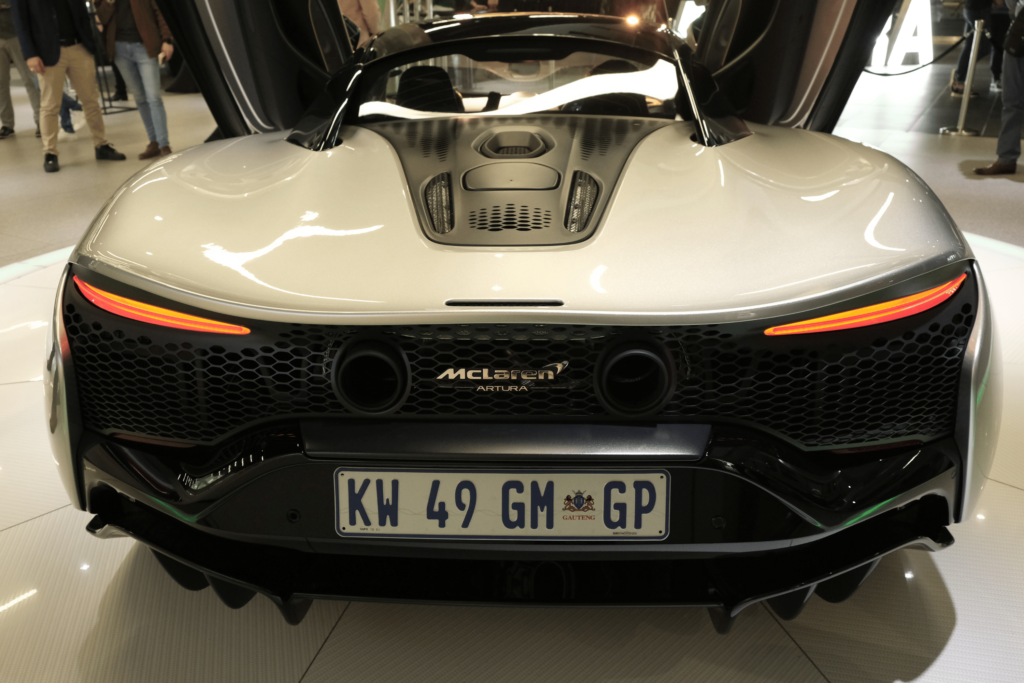 This might be a hybrid but the addition of electricity to the powertrain is only really meant to enhance performance – with the added benefit of using less fuel. It offers a combined fuel economy of 4.6l/100km but real-world results may vary. Especially on South African roads. The e-motor does offer an electric-only drive mode but can only manage a range of 31km, says McLaren.
This might be a hybrid but the addition of electricity to the powertrain is only really meant to enhance performance – with the added benefit of using less fuel. It offers a combined fuel economy of 4.6l/100km but real-world results may vary. Especially on South African roads. The e-motor does offer an electric-only drive mode but can only manage a range of 31km, says McLaren.
Fortunately, a small battery means it won’t take 5 to 7 business days to recharge, even when plugged into a wall socket at home. You shouldn’t have to worry about keeping it charged. The V6 can help with that. But you will have to do without regenerative braking. That’s been omitted in favour of brake feel.
The relatively small 7.4kWh battery pack and new ‘superformed’ body panels have made it possible for the McLaren wizards to keep the kerb weight of the Artura just below 1,500kg, which is almost nothing for a hybrid.
Unmistakably McLaren
It seems the major changes in the Artura all take place under the eight superformed aluminium body panels. There are a few new curves and crevices here and there, but the Artura features a lot of the same design language as previous McLarens.
This isn’t a bad thing. This is the first implementation of the new platform so we get the impression McLaren didn’t want to change too much too quickly. If you’re a fan of the design of older McLarens, that won’t change with the Artura.
The same is true of the interior. McLaren’s minimalist approach to cabins continues in the Artura; you won’t find any dials, knobs, or switches on the steering wheel. You do get a fancy-looking 8in vertical infotainment screen and the usual Android Auto and Apple CarPlay connectivity support. While they are expected features — this isn’t the Solus GT — it’s obvious they aren’t a focus here. That lands squarely on the driving experience.
Local price and availability aren’t confirmed yet, although we think it’s likely to come in at just under R5 million. If you have to ask, then it’s probably not for you. Either way, we’ll be sure to update this article when we receive confirmation of pricing.

